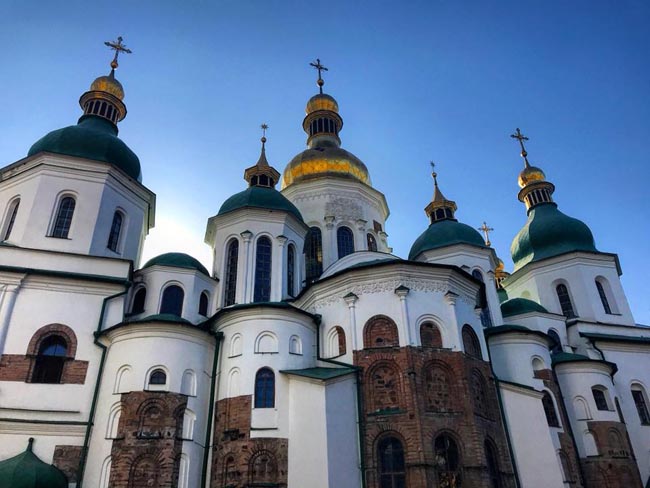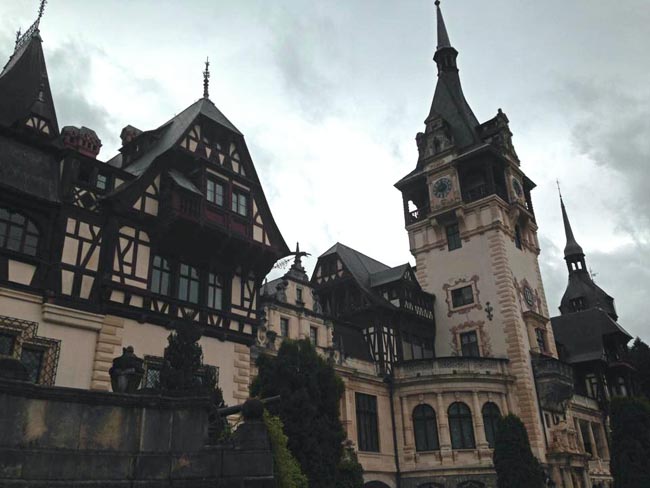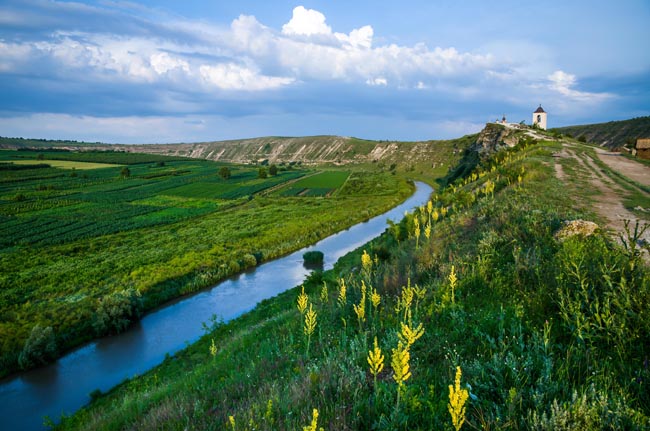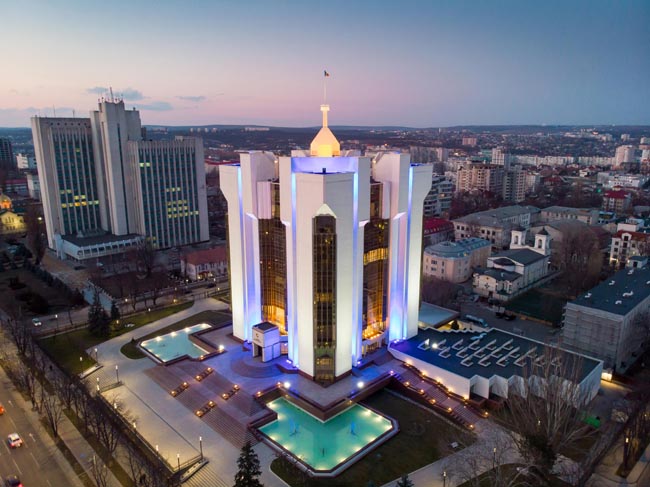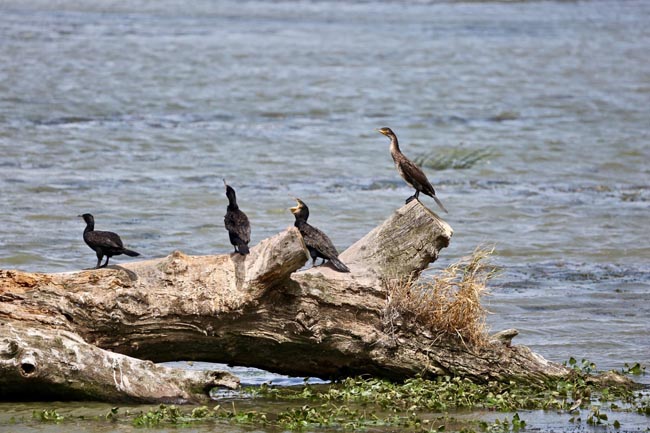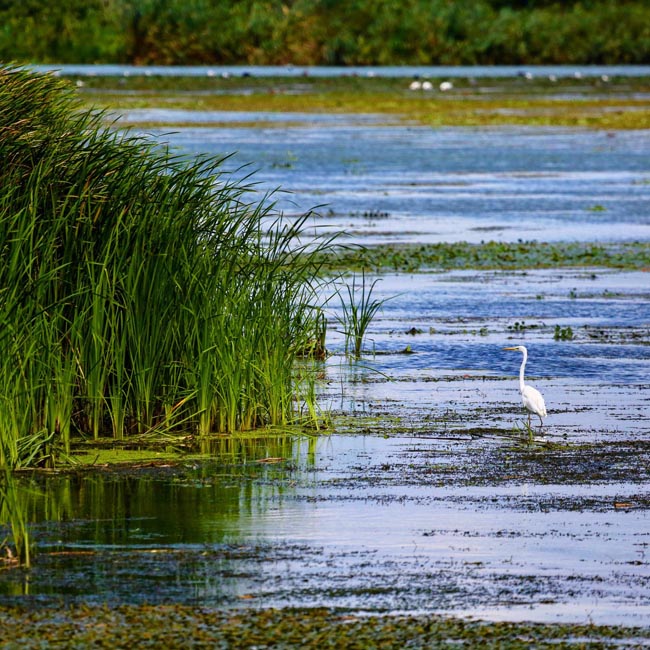Prices below are per person, twin-sharing costs in US Dollars (USD). Pricing does not include airfare to/from the tour and any applicable taxes. For single supplement rates and taxes (if any), please refer to below Prices & Dates table. For general information on flights to/from the tour, click here.
Your Travel and Accommodation Arranged For You
Tips Included for Driver, Restaurant Staff, Local Guides
Authentic Local Experiences With Lots Of Inclusions.
Select a date below to reserve your spot:
The above prices are subject to an additional $80 for taxes/fees levied on flights that occur as part of the tour. The internal airfares ARE included (any exceptions are listed in red below), but we list the taxes separately on your invoice as they are beyond our control and can change at any time.
Optional Single Supplement: $880 USD (number of singles limited).
Download Itinerary
Day 1 Arrival in Kyiv, Ukraine
Today we arrive in Kyiv ("Kiev" in Russian).
Overnight in Kyiv.
Included Meal(s): Dinner
Day 2 Kyiv: City Tour
Today we a full day of sightseeing in Kyiv, the capital city of Ukraine. Our day will start at the cathedral of Hagia Sophia, the oldest cathedral in Ukraine. Founded in the early 11th century, and largely rebuilt during the 17th and 18th centuries, it is now a museum with beautiful Christian frescoes. St Sophia Cathedral is inscribed on the UNESCO World Heritage List.
During our tour we will see the Golden Gate, the historic gateway in the ancient city walls of Kyiv. We will visit St Andrew's Church, designed by Rastrelli, the famous architect who built the world famous Winter Palace in St. Petersburg. Just nearby is Andrew's Ascent, (Andriyivky Uzviz), Kyiv's most popular street with tourists and locals alike. Named after the nearby Baroque St. Andrew’s Church, this street was once the connecting avenue between the aristocratic strongholds called the Upper City and the mercantile center of dockside Podil.
We will tour St Michael's Monastery; a precious Kyivan relic, sky-blue in colour, with its golden glitter of cupolas and vividly decorated arches. The Archangel Michael is considered to be the patron of Kyiv. A highlight for many will be our visit to the Kyiv-Pechersk Lavra, also known as the 'Kyiv Monastery of Caves'. Here we will be able to see the famous caves, one of the most sacred places of Orthodox Christianity. Within this complex we also visit the unique museums of precious historical items, and collections of ancient books and icons.
During our touring of this city we will be sure to stop nearby Kreshatyk, the 'main street' of Kyiv. We will walk along this street to Independence Square. Kreshatyk teems with people as it gently curves through the nation's capital. This street has a regal feel and leads directly to the main and most beautiful square in the city -- Independence Square.
Overnight in Kyiv.
Included Meal(s): Breakfast and Dinner
Not finding what you're looking for?
Our specialists can take away the stress and create a private custom tour tailored to your exact interests and budget.
Day 3 Kyiv - Lviv
This morning we head to the suburbs of Kyiv to the sobering memorial at Babi Yar. Kyiv had a Jewish population of 175,000 on the eve of the Nazi invasion of the Soviet Union in 1941. The Nazi forces captured the city in mid-September; within less than a fortnight, on the 29th and 30th, nearly 34,000 Jews of the ghetto were brought to a suburban ravine known as Babi Yar, near the Jewish Cemetery, where men, women, and children were executed over two days. In subsequent months, most of the remaining population was exterminated.
Today we will also visit the Chernobyl Museum in Kyiv. This museum houses models and memorabilia designed to educate the public about the many aspects of the Chernobyl disaster.
Later today we will fly from Kyiv to Lviv, the "capital" of Western Ukraine and one of the country's most impressive cities. Lviv, a UNESCO World Heritage Site, has a rich and impressive history. Numerous historical events are concerned with the city. The walls of old Lviv buildings still keep the spirit of past centuries; cozy streets and fascinating monuments make it a unique attraction among the Ukrainian and Eastern European cities. The Ukrainian Catholic Church, forced underground by Stalin in 1946, re-emerged here with Glasnost in the late 1980s to play a significant role in a new Ukrainian independence movement.
Overnight in Lviv.
Included Meal(s): Breakfast and Dinner
Day 4 Lviv: City Tour
Lviv's architectural landscape joins the monuments of numerous styles and different epochs. From the gothic 14th Century Latin Cathedral, to the baroque of St. George (Sviatoho Yura) Cathedral. Renaissance-style Bernardine Monastery and Chapel of Boimes co-exist with the strict simplicity of Armenian Church.
Today we will enjoy a city tour (mostly on foot) of the major highlights of Lviv. We will start by driving to the High Castle Hill, once the location of the main defensive fort of the city. A visit here provides us with a great panorama view over the surrounding region. Down in the city center we will visit the 13th Century St. Nicholas Church, one of the oldest functioning Orthodox churches in Lviv. Nearby the Church of the Assumption (which we also visit) is one of Lviv's most conspicuous landmarks, the Korniakt Tower from the 16th Century.
Along our walk we will stop to step inside the Pharmacy Museum of Lviv, dating back to 1735. The Market Square in Lviv is the central square of the city, with history dating back to the 14th Century. The town hall stands in the middle and is surrounded by about 44 burgher houses of various architectural styles, each with its own history.
We will also stop at the 17th Century Church of St. Parasceve and St. Georges Cathedral. Our walk through the historical center will end along Svobody Prospekt (Freedom Avenue), Lviv's main boulevard in the city. The most impressive building here is the magnificent Opera House, built in 1897-1900.
Overnight in Lviv.
Included Meal(s): Breakfast and Dinner
Day 5 Lviv: Lychakivsky Cemetery & Museum of Folk Architecture and Rural Life
Today we will drive out to the Lychakivsky Cemetery. With the same sort of overgrown grounds and Gothic aura as the famous Parisian necropolis, Pere Lachaise, Lychakivsky is the final resting place for more than 400,000 people. A trip to Lviv wouldn't be complete without a wander here. Initially opened in 1787 in compliance with an Austrian law to move burials from the centre of town, the cemetery soon became one of Europe's finest. Generations of Lvovians were laid to rest here: intelligentsia, bourgeoisie and nobility.
We also visit the Lviv Museum of Folk Architecture and Rural Life, an open-air museum containing 120 monuments of folk architecture including six wooden churches, which create a genuine atmosphere of Ukrainian villages from different regions of the country. We also visit the Lviv Ethnographic Museum before enjoying some free time in this charming city.
Overnight in Lviv.
Included Meal(s): Breakfast and Dinner
Day 6 Lviv - Simferopol - Yalta
Today we fly to the Crimean capital of Simferopol (via Kyiv). Upon arrival we continue by road to Yalta (approx 1.5 hours).
Yalta is a seaside resort on the Crimean Peninsula, long a favoured spot for Russian and Ukrainian elite who constructed palatial homes here. The city is located on the site of an ancient Greek colony that is said to have been founded by Greek sailors who were looking for a safe shore on which to land. With its Mediterranean climate there are many vineyards and orchards in the vicinity.
Overnight in Yalta.
Included Meal(s): Breakfast and Dinner
Day 7 Yalta & Sevastopol
Today we will enjoy a full day of sightseeing starting with the magnificent Alexander Nevsky Cathedral, with its intricate Byzantine adornment and golden 'onion' domes. Our coastal drive brings us to Livadia Palace, summer home of Tsar Nicholas II, built in 1911 in elegant renaissance style. Livadia later hosted the 1945 Yalta Conference when Churchill, Stalin, and Roosevelt met at the end of WWII to carve Europe into spheres of influence. Today the palace houses a museum that we will visit.
We continue out to the west coast to Sevastopol where we will visit the site of the Crimean War (1864-1865) and the scene of the famous "Charge of the Light Brigade". We will stop to visit the Panorama Museum with its famous 360-degree painting. After a break for lunch we will visit the ancient Greek town of Khersones. Khersones is located on the shores of the Black Sea, and is the site of an ancient Greek colony founded approximately 2500 years ago. Today the buildings here mix influences of Greek, Roman and Byzantine.
Overnight in Yalta.
Included Meal(s): Breakfast and Dinner
Day 8 Yalta - Odesa
Today we enjoy a full day scenic drive to Odesa ("Odessa" in Russian). Our journey takes us north and crosses over the Crimean Peninsula and onto 'mainland' Ukraine. We will cross the famous Isthmus of Perekop and later cross over the Dnieper River before arriving in Odesa.
From the ancient times the area was inhabited by Scythians, Sarmats, Greeks, and Slavs. In the times of Kyiv Rus it was a part of this huge Slavic state. In the 13th century it was annexed to the Tartar-Mongol Empire, "The Golden Horde". At the beginning of the 15th century it was annexed to Lithuania, and in some 50 years, to Turkey. In 1791 the territory became a part of the Russian Empire.
Overnight in Odesa.
Included Meal(s): Breakfast and Dinner
Day 9 Odesa Catacombs
Odessa underground tunnels (catacombs) were created nearly 200 years ago during mining of building materials that were used to build the city. Currently it is the maze of 2,500 kilometers with hundreds of entrances, exits, caves, and tunnels.
During the World War II, in 1941, when German and Romanian army occupied Odesa during the war, the Soviet Military headquarters gave the order to organize the partisan resistance. And Odesa catacombs were chosen as the camp for the unit of partisans. The provisions and weapons was enough there so the unit could stay underground for half a year. The partisan unit was fighting with nazi and Romanian army during all the period of occupation.
You'll walk in underground tunnels, where conditions of partisan camp are reconstructed and will listen to the history of struggle.
Overnight in Odesa.
Included Meal(s): Breakfast and Dinner
Day 10 Odesa: City Tour
Today we enjoy a half-day city tour, including many architectural sites of 19th & 20th centuries, many of them designed by world famous architects and engineers. Most notable are the Opera House (resembling the Vienna Opera and the Dresden Court Theater) built in 1884-87; the Marine (Potyomkin) Stairway (1837-41) -- one of the largest stairways in the world; and the heart of Odesa and immortalized in Sergei Eisenstein's 1925 film, Battleship Potemkin; Deribasivska [Deribasovskaya] Street with plenty of shops, cafes and restaurants. We will visit the five-domed Uspensky Cathedral, and drive out to the Shevchenko Park with its views of the Black Sea. During our sightseeing we will also tour inside the Fine Arts Gallery (formally Count Pototsky's Palace), which houses Russian and Ukrainian paintings dating back to the 15th century.
There will be some free time this afternoon before dinner. Odesa is a great city for walking, and this free time will give you a chance to do some exploring on your own.
Overnight in Odesa.
Included Meal(s): Breakfast and Dinner
Day 11 Odesa - Belgorod-Dniestrovsky - Chisinau, Moldova
Today we depart Odesa and travel to Belgorod-Dniestrovsky and visit the impressive fortress on the banks of the Dnister River. Stefan II of Moldavia founded the 13th century fortress, one of Ukraine's largest, on a strategic spur of land overlooking the Dnister estuary. The drive to get here is picturesque, taking us through a rural region of quiet villages, farmland, rural communities, and providing us with an occasional view of the Black Sea.
We cross into Moldova. Although not well-known, Moldova offers some attractions that would surprise even the most seasoned traveller. Little Moldova has a landscape covered with vineyards, pristine forests and lakes, medieval monasteries and fortresses, wine caves stretch for miles, a rich history, and eight ethnic nationalities.
A chronicler once called Moldova "a country on the way of all disasters". The territory of Moldova is located on the boundary of the Eastern and the Western Europe and has been populated from ancient times. The earliest leavings are of the post Paleolithic times, then the Chernyakhovskaya culture, and the treasures of the Romans, to the 4th century AD, the Slavonic settlements in the 8th-9th centuries. The ancient Romans and wandering tribes that used to migrate over this territory, left vestiges of their stay.
Our journey today traverses the valley of the Dneister River with its orchards and vineyards. The first town, Tiraspol, was founded as a stronghold by Gneral Suvorov in 1792, but named after the ancient Greek colony of Tiras. Built in the grid pattern of 18th century "new towns," Tiraspol retains traces of the original fort. Some of the older houses, with their traditional Moldovan balconies, betray a Turkish influence.
A little further we pass Bendery, which has been the site of a fortress commanding the Dneister crossings since the second century BC. The original 12th century fortress was built by the Genoese, who traded actively with the Black Sea ports. It fell to the Turks in the 16th century. The rectangular fort with its citadel was built by the Turks in the 1530s. It was beseiged several times by the Russians in the 18th century as part of their drive for Bessarabia, and was all but destroyed in the German retreat of 1944.
Overnight in Chisinau.
Included Meal(s): Breakfast and Dinner
Day 12 Chisinau: City Tour & Wine Country
The history and life of Moldova through the centuries is best presented in the History and Regional Lore Museum, a beautiful Turkish-style complex, which we will visit along with The Fine Arts Museum, which houses good examples of Russian, West European and Moldovan paintings, sculpture and applied arts.
A visit to Moldova would not be complete without a trip to the Moldovan wine country. We visit Cricova, the world's largest wine cellar. It is actually a subterranean city with winding streets extending for 60 kilometres (37 miles). The street names orient visitors toward Str Cabernet, Str Pinot or Str Merlot. There are over one million bottles of white wines -- 648 types are stored in the cellars at a uniform temperature of 12 C (54 F). A tour of Cricova is one of the best ways to sample the wide variety of Moldovan wines and champagne which are gaining great popularity outside Moldova's borders, including Western Europe and North America.
Overnight in Chisinau.
Included Meal(s): Breakfast and Dinner
Day 13 Chisinau: Orheiul Vechi Monastery
Among Moldova's greatest wonders are its monasteries, and we visit the most famous, the cave monastery in Orhei Vechi.
En route to Orheiul Vechi we stop at Ivancea and the excellent ethnographic museum housed in a 19th-century stately mansion on beautiful grounds. Its eight halls are filled with traditional Moldovan costumes, musical instruments, pottery and folk art.
This 13th century church of Orheiul Vechi was excavated from a limestone cliff by Orthodox Christian monks who believed the cave would be resilient against invaders. Archaeologists have recently discovered ruins of Turkish baths and a protective wall built in the 15th century, which surrounds the religious complex. Stefan the Great erected a fortress in Orhei Vechi in the 14th century, destroyed by Tartar invaders in 1499. The Cave Monastery was inhabited until the 18th century. Closed during Soviet times, it was re-opened in 1996, and services are now held regularly.
Return to Chisinau.
Overnight in Chisinau.
Included Meal(s): Breakfast and Dinner
Day 14 Chisinau, Moldova - Bucharest, Romania
Today we fly to Bucharest, the capital of Romania.
Overnight in Bucharest.
Included Meal(s): Breakfast and Dinner
Day 15 Bucharest - Sinaia: Peles & Bran Castles - Sighisoara
We begin our full day of travel and activities with a morning departure by road toward Sinaia.
Upon arrival we will visit the nearby Peles Castle. Considered by many one of the most beautiful castles in all Europe, Peles Castle is a masterpiece of German new-Renaissance architecture. This castle was built in the final quarter of the last century for Romania's 'imported ruler' King Carol. Designed mainly in German Renaissance style, this summer residence was decorated throughout by Carol's eccentric wife Carmen Sylvan. Many valuable objects are contained within the castles 160 rooms.
We also visit Sinaia, the "Pearl of the Carpathian Mountains". We will take a leisurely STROLL up to the 17th century Sinaia Monastery, an interesting cluster of churches and courtyards which take their name from the ancient Egyptian monastery on Mount Sinai. After a break for lunch in Sinaia we depart for Bran and Bran Castle.
Bran Castle is erroneously claimed by some to be that of Count Dracula, the world's most famous vampire. Perched atop a rocky outcrop, this strategically located castle was built in 1377 to protect nearby Brasov from invaders. The castle's rooms and towers surround an inner courtyard. Some rooms are connected through underground passages to the inner court. Bran is home to a rich collection of Romanian and foreign furniture and art items from the 14th-19th centuries. After our visit we continue to Sighisoara, arriving in time for dinner.
Overnight in Sighisoara.
Included Meal(s): Breakfast and Dinner
Day 16 Sighisoara, Sibiu & Biertan
This morning we have a day trip to Sibiu and Biertan.
Called Hermannstadt in German, Sibiu was the most important of the 12th century Saxon settlements in Transylvania and its industrious emigres, primarily from the Rhineland, the Moselle Valley, Flanders and Saxony, erected walls around it for protection. The first wall destroyed by invaders not long after its construction, but remains of a 15th century brick wall still stand. Because of the blood shed at its walls, the Turks, after an unsuccessful onslaught, called Sibiu the "Red City." Built into the walls are defense towers that were assigned to particular guilds and medieval houses.
Upon arrival we will have a sightseeing tour of Sibiu, one of the oldest towns on the Transylvanian Plateau. We will wander its old quarter, where houses with immense roofs have been built within the fortifications, giving Sibiu its powerful medieval aspect. The Tartans destroyed the town's first Citadel in the 13th century and the massive Evangelical Church now occupies the site. It took 200 years to build the church in the 14th and 15th centuries.
We continue to Biertan, a former Saxon village south of Sighisoara. Here we find a fortified church from 15th century, listed as a UNESCO World Heritage, representative of the unique Transylvanian phenomenon of building rural fortified churches. Surrounded by three lines of defense walls of 12m high and towers, the church was never breached by invaders. After a break for lunch here, we’ll return to Sighisoara for a walking tour and (perhaps) some free time before dinner.
Schassburg in German, or Segesvar in Hungarian, Sighisoara is the only inhabited Middle Ages city in Europe. Mentioned by historians as far back as 1191, Sighisoara has a long tradition in craftsmanship and trade and its fortifications and defense towers still witness for guilds as those of tinsmiths, butchers, hatters, and blacksmiths. Narrow winding streets, houses with thick walls and huge portals painted in vivid colours, towers, and churches, all old and very old (13th-16th centuries) enhance the charm of the place.
We will visit to the History Museum located in the former Town Hall. The Clock Tower, dated from the 14th Century, reveals a marvellous view over Sighisoara.
Overnight in Sighisoara.
Included Meal(s): Breakfast and Dinner
Day 17 Sighisoara - Praid Salt Mine - Bistrita - Gura Humorului
Today we visit is one of the biggest salt mines in Europe. Its exploitation has been an important income source for the inhabitants of the area for hundreds of years.
We arrive in the heart of the mountains by bus through a long tunnel (1500 m). 120 m below the surface we find an underground city. The air is ionized and it is believed to have therapeutic qualities for those suffereing from respiratory ailments. Treatments are given under the supervision of a medical team that organizes gym programs and breathing exercises. Tourists have everything they need: treatment places, coffee shops, billiards, libraries, entertainment and even a place where people can pray.
After a break for lunch in Praid, we continue via Bistrita, founded in the early 13th century by German settlers and (due to its location on the main trading route with Moldavia) to become one of Transylvania's major Medieval cities. Some visitors are attracted by the fact that the town was mentioned in Bram Stoker's novel, Dracula.
We overnight in Gura Humorului, the perfect base for our explorations of the Painted Monasteries of Bucovina.
Overnight in Gura Humorului.
Included Meal(s): Breakfast and Dinner
Day 18 Bucovina Monasteries
Today is spent visiting some of the most impressive Bucovina monasteries. These triumphs of Byzantine-influenced art reflect a flowering of Moldavian civilization in the 15th and 16th centuries. The "Painted" Monasteries are a major Moldavian destination, because of the vivid and animated frescoes on their church walls. In acknowledgement of their value, the monasteries in Becoming have been declared as UNESCO protected cultural sites. The art historians compare their artistic value with the mural paintings of the San Marco church of Venice. The secrets of the Moldavian painters who prepared the colors and the techniques that made the paintings incredibly resistant are still a mystery.
We will visit Voronet, a nun monastery consecrated to St George, within walking distance from Guar Humorous town. Voronet is probably the most accomplished sample of artistic achievement in Moldavian architecture and painting. The monastery was built at a time of peace with the Turks, when Stephen had centralized the state, giving a new impetus to its economy and culture. We will also visit Humor Monastery, founded in 1530.
After a visit to the famous Marginea black ceramics centre, we visit the Sucevita Monastery, the largest and arguably the finest of the Bukovina monasteries. The church inside the fortified monastic enclosure (1586) is almost completely covered in frescoes inside and out.
Overnight in Gura Humorului.
Included Meal(s): Breakfast and Dinner
Day 19 Gura Humorului - Cheile Bicazului - Lacu Rosu - Brasov
This morning we will depart for Brasov via a photo stop at Cheile Bicazulu (Bicaz Canyon).
The road that slices through the Bicaz Gorges is among Romania's most spectacular. The gorge twists and turns steeply uphill for 5km, cutting through sheer, 300-meter high limestone rocks. At one point, the narrow mountain road runs beneath the overhanging rocks in a section known as the 'neck of hell'. This stretch of road is protected as part of the Hasmas-Bicaz Gorges National Park.
A few kilometers west we will cross into Transylvania's Harghita County and immediately come to the resort area of Lacu Rosu or Red Lake. The alpine resort in this region sprang up in the 1970's and is still a magnet for hikers from both Transylvania and Moldavia. We'll break for lunch before continuing to Brasov.
Overnight in Brasov.
Included Meal(s): Breakfast and Dinner
Day 20 Brasov: Town Tour - Bucharest: City Tour
This morning we tour Brasov. Kronstadt in German, Brasso in Hungarian, Brasov ranks second in size after Bucharest. The Old Town lies between two mountains, surrounded like a halo by the Carpathians. In Brasov we will visit the Black Church and Museum of First Romanian School of Schei.
We depart for Bucharest, arriving in time for a break for lunch. We then begin our sightseeing program in the capital, the nation's powerhouse of cultural and economic life founded 500 years ago.* During the 1930's, its tree-lined boulevards and fin de siecle architecture earned it the nickname "The Little Paris of the East". There is even an Arc de Triomphe on the handsome Soseaua Kiseleff, itself longer than the Champs Elysees and alive with blossoms in the spring.
Despite the massive reconstructions of the 1980's, Bucharest remains a 'Garden City', leafy and pleasant, with many sidewalk cafes. Our tour today will include the Cotroceni Palace and Museum, the Triumphal Arch, the Romanian Athenaeum, and University Square. We will drive out to visit the Bucharest Village Museum. Situated in a picturesque environment on a lakeshore, this is one of the largest and oldest outdoors museums in Europe. Its exhibits, including houses, churches, water and windmills are of great historic and artistic value.
* Our intention is always to include the Palace of the Parliament; however, the facility is frequently closed to visitors for official purposes/events, often without notice. If we are able to squeeze it in, please note that it may require that we miss something else due to time constraints.
Overnight in Bucharest.
Included Meal(s): Breakfast and Dinner
Day 21 Departure
Departure from Bucharest.
DRUM BUN!
Included Meal(s): Breakfast
Inclusions
Breakfast and dinner (hotels & local restaurants) daily. All transport, sightseeing and entrance fees for sites noted as 'visited' in the detailed itinerary. Gratuities for local guides, drivers, restaurant staff, porters. Airport transfers for land & air customers and for early arriving / late departing land & air customers who book their extra hotel nights through us.
Exclusions
International airfare to/from the tour. Tour Leader gratuities, lunches, drinks, personal items (phone, laundry, etc), domestic and international air taxes (if applicable), excursions referenced as 'optional'. Airport transfers for Land Only customers. Our post-reservation trip notes offer further guidance on optional meal costs and shopping.
Seasonality and Weather
This tour combination is offered in fall only when temperatures are relatively mild and crowds are thinner. Showers are quite possible at any time.
Transport and Travel Conditions
Land transport throughout by private air-conditioned motor coach, 24-36 seats depending on ultimate group size (see 'group size'). Though we will have a couple of full bus days on winding roads there are plenty of stops of interest. Flights by local carriers. Multiple walking tours on uneven surfaces.
Am I suitable for this tour? Please refer to our self-assessment form.
Activity Level: 1
No particular physical activity is involved other than town/city walks and short walks to dinners and sites of interest, some of which are large.
To learn more about the Activity levels, please visit our tour styles page.
Accommodation
Well-located, air- conditioned, mid-range hotels (3 star) throughout. Many are smaller properties (3-4 story) that may not have elevators. All hotels have en suite bath, though most have shower only. Porter service is sometimes available though you MUST be independent with your luggage. Single rooms are limited and likely smaller than twins.
Staff and Support
Tour Leader, driver, local step-on guides in various locales.
Group Size
10-18 (plus Tour Leader)
Tour Extensions
This tour is part of a series that can be upgraded to make for a longer trip. For more options, please refer to tour code/s:
Tour Overview Countries Visited: 3 Acivity Level: 2 Tour Style: Cultural
Hungary, Romania & Bulgaria Tour from Adventures Abroad: Budapest, Hungary, is the first port of call on this journey through the varied landscapes and cultures of these three highly rewarding Eastern European tour destinations.
Mediaeval castles, neo-Renaissance churches, royal palaces, hilltop fortresses and a concert hall that displays a wide spectrum of architectural influences, including Byzantine, Moorish, Romanesque and Hungarian, give travellers an insight into the great beauty and diversity of the city.
We stop to admire the UNESCO-designated historic centre of Holloko and the Baroque buildings that epitomize Eger, before heading into bewitching countryside sceneries in the Bukk Hills.
Charming traditional villages and wildlife reserves bring our Hungary leg of the tour to an end, at which point we make headway for Bucharest, Romania.
From the capital, once dubbed 'The Paris of the East' as much for its hectic, cosmopolitan feel as for its architecture, we head to the Bucovina Monasteries, through beautiful towns and villages steeped in history and find centuries-old castles, monuments and sites of interest around the Transylvanian plateau.
And we certainly can't pass up the opportunity to check out Bran Castle, believed to be Dracula's, whether the fable holds truth or not!
Another overnight train takes us to the mountain-encircled Bulgarian capital, Sophia, a city of wide boulevards and quaint park gardens and the second oldest capital in Europe.
Heading onwards, we travel to ancient cities on the Plain of Thrace and into the Valley of the Roses to get a feel for the cultural and natural environments of the country and bring an end to our thrilling adventure by exploring the famous Rila Monasteries.
Tour Overview Countries Visited: 4 Acivity Level: 2 Tour Style: Cultural
Bounties in the Slovak Republic lie copious and abundant and we need the best part of a week on our Slovakia, Hungary, Romania & Bulgaria Tour to explore fully the historic, cultural and natural features of this unique country.
From the centuries-old quarters of the cosmopolitan capital city, Bratislava, and the ornate churches, towers and architectural marvels therein, to the breathtaking natural glory of the Pineny region and the dizzying heights of the Carpathian Mountains, our route showcases the many faces of the Slovak Republic and its majesty.
We descend to investigate underground caves and ascend the slopes of the second highest mountain in the Low Tatras Range in a chairlift, before ending the Slovak Republic leg and heading to Hungary's capital, Budapest. We tour the dynamic capital, spending time amid stately buildings and meandering along narrow streets, all the while soaking in the attractions, like the neo-Gothic Parliament, the Museum of Ethnography, the concert hall and the Chain Bridge.
Through towns and villages that at times seem forgotten by time, we admire rural scenery that would not be out of place over a century ago, like the traditional garb of the women in Holloko and the town's cobbled streets. Our trip to see the stalagmite pyramids and red and black stalactite drip stones in the Aggtelek Caves is one not soon forgotten and we leave Hungary via the wine-producing region near Debrecen and the Hortobagy National Park and Wildlife Preserve.
In Romania, we check out the famous Bucovina Monasteries and their collections of Byzantine art, the mythical home of Dracula at Bran Castle, 'the Pearl of the Carpathian Mountains' at Sinaia and one of the most beautiful castles in Europe at Peles Castle.
We then head into Bulgaria to spend our final eight days seeing the capital city, Sophia, hiking in the Valley of the Roses, visiting the Rila Monasteries and wandering around ancient Thracian cities admiring the sights and meeting the friendly locals.
Tour Overview Countries Visited: 4 Acivity Level: 2 Tour Style: Cultural
Hungary, Romania, Slovak & Czech Republic Tour from Adventures Abroad: Experience the best of culture, spectacle and nature on this 28-day adventure through four highly memorable tour destinations in the heart of Europe.
Prague, the capital city and jewel in the crown of the Czech Republic, presents the perfect introduction to a region of the world steeped in history and brimming with attraction, both modern and ancient.
This magical city has a wholly unique atmosphere and having remained largely undamaged by the Second World War, boasts mazes of cobblestone alleys, mediaeval courtyards and historic site by the dozen.
We visit the castle, the Old Town, the Jewish Quarter and Wenceslas Square, allocating enough time to let the poignant beauty of this metropolis sink in and then it's off to tour Renaissance chateaux, Gothic fortresses and the world-famous spa town of Karlovy Vary.
Visits to Cesky Krumlov and the Heritage Site of Telc bring our Czech Republic leg of our tour to an exquisite close. In Slovakia, we travel from the exciting capital, Bratislava, through picturesque rural sceneries punctuated by quaint towns and striking chateaux and on to one of Central Europe's most beautiful natural environments at Pieniny National Park.
We come across unique wooden architecture amid the Low Tetras mountain range and mediaeval monasteries near the border with Poland before crossing into Hungary and heading for its capital, Budapest.
Known as 'the Paris of Central Europe', Budapest is as romantic and harmonious as a city can be, a feature that is mirrored in the enchanting towns of Holloko, where traditional dress is still worn by women, and Debrecen, the largest town in Eastern Hungary and today an important market town.
As we make our way through glorious Hungarian countryside, stopping in at villages to mingle with friendly locals, taste local culinary delicacies and get a feel for rural lifestyle, we discover that there's so much more to this country than its famously bewitching capital.
Last on our destination list is Romania, a country with a fascinating blend of old and new. From the garden city of Bucharest, via the Bucovina monasteries with their stunning displays of Byzantine-influenced art, the Carpathian Mountains and UNESCO-designated fortified churches atop the Transylvanian plateau, we see the spectacular variety of man-made and natural wonder that Romania has to offer and discover its true character for ourselves.
Tour Overview Countries Visited: 5 Acivity Level: 2 Tour Style: Cultural
Bulgaria, Romania, Hungary, Slovak & Czech Republic Tour from Adventures Abroad: This epic, 35-day extravaganza of a tour is the ultimate showcase of the histories, cultures, landscapes and natures of these five exciting destinations in Eastern Europe and the Balkans.
Beginning in Prague, a city that is often compared to Florence and Rome for its beauty and one that Goethe once called the prettiest gemstone in the crown of the world, we begin our Czech Republic leg of the tour basking in the glories of one of the most stunning and memorable metropolises on the planet.
We also visit world-famous spa towns; take a ride up a funicular to admire striking vistas; and spend time in the UNESCO-designated historic centre of Cesky Krumlov, perhaps the most exquisite city in the country.
We travel through regions famous for orchards and vineyards in the Slovak Republic en route to Bratislava, the capital and often the most popular attraction in the country.
After comprehensive exploration of the country's largest urban centre, we head to one of the most impressive areas of natural beauty in Central Europe at Pieniny National Park, before pressing on to Budapest, Hungary.
From Hungary, we cross into Romania, starting this leg of the adventure in Bucharest, once known as 'The Paris of the East'. A historically fascinating destination, Romania is home to over 2,000 fresco-brimming monasteries, dozens of picture-perfect castles and countless fortified villages.
Regions visited: Central And Eastern Europe
Countries visited: Ukraine; Moldova and Romania
*The red tour trail on the map does not represent the actual travel path.
The following is a list of sample hotels at some locations included on this tour. The hotels shown here are meant to provide a general sense of the standard of hotel we usually aim for; they are not necessarily confirmed for your chosen departure.







